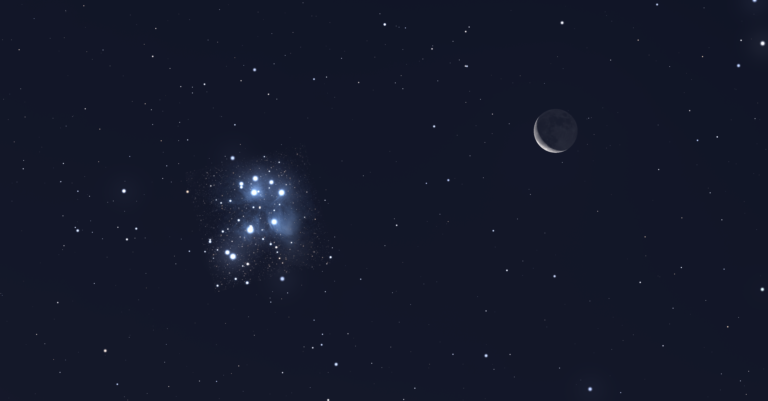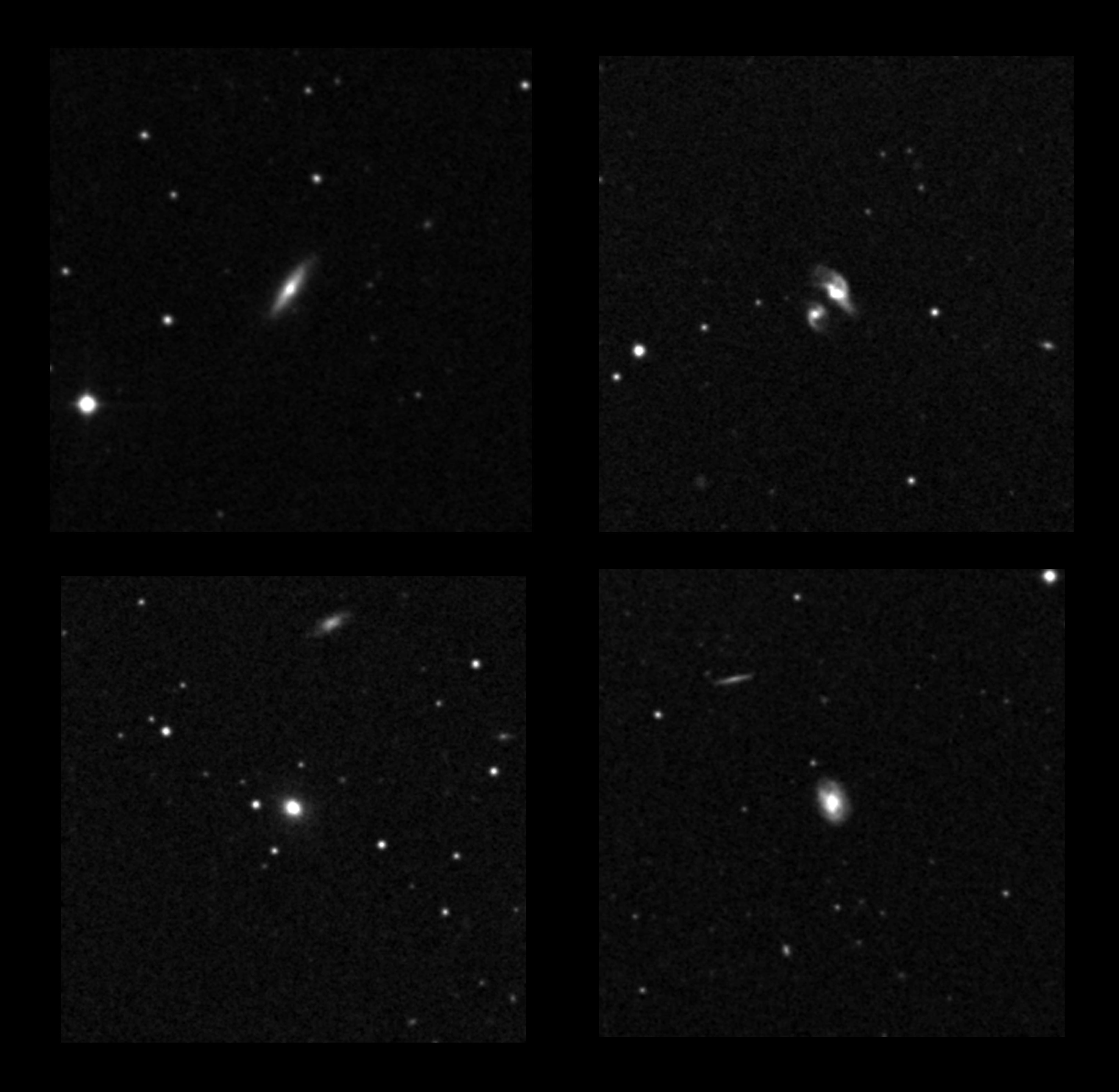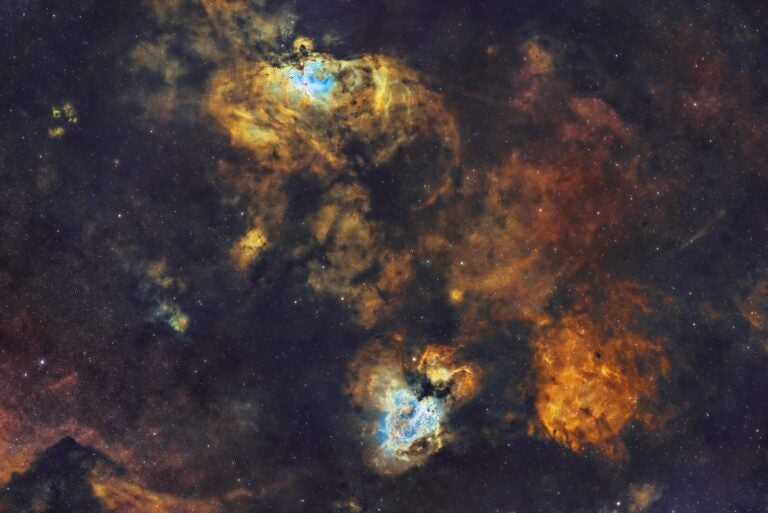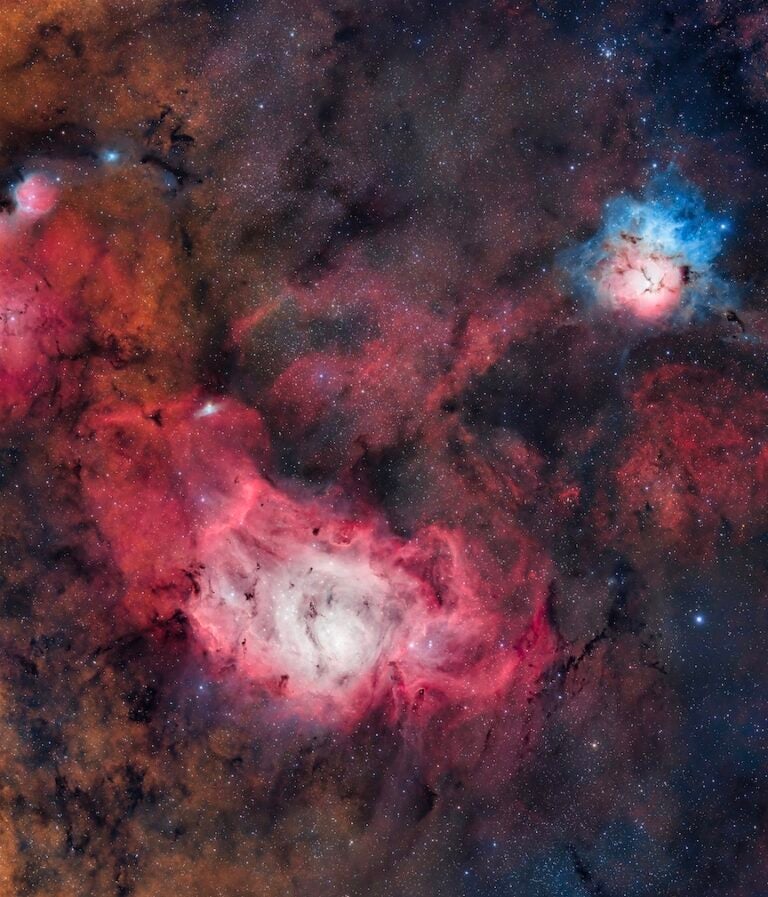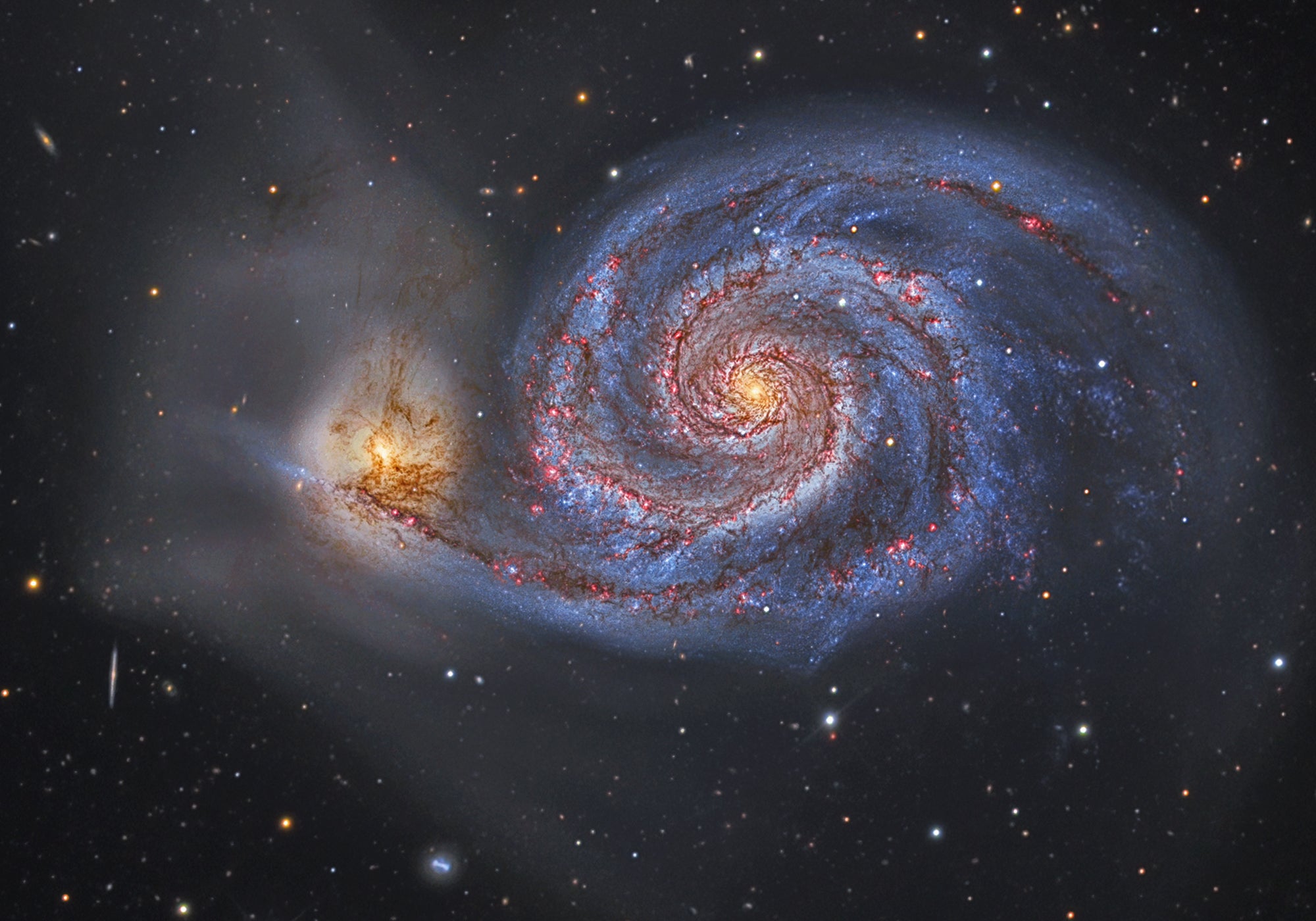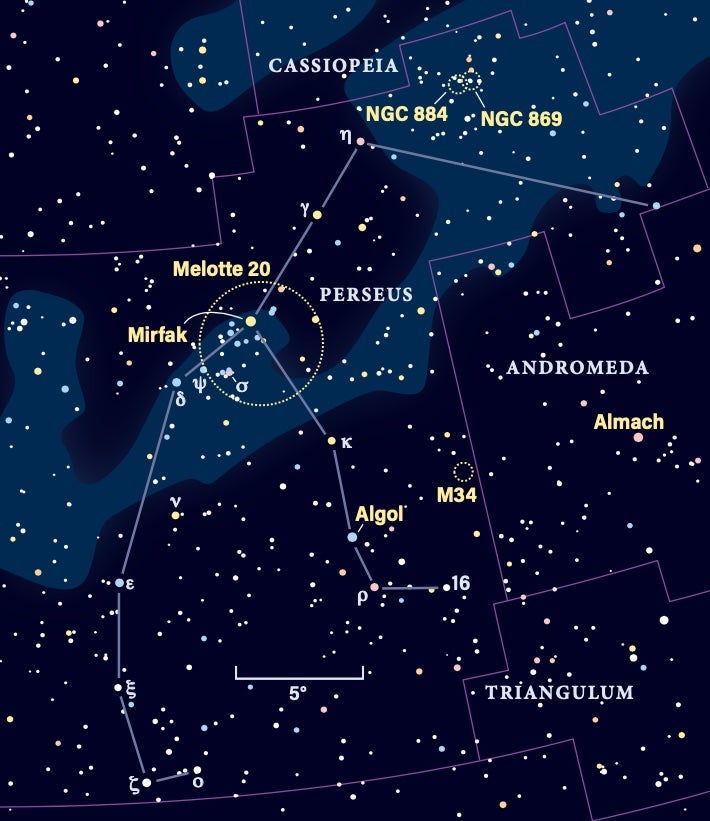
Perseus, the Greek mythological hero, is probably best known to amateur astronomers as the home of the beautiful Double Cluster, NGC 869 and NGC 884. The pair is striking through all binoculars and is always a first stop for me whenever I head out this time of year. How Charles Messier could have missed them, and yet included some far greater challenges in his catalog, is beyond me.
But there is more to enjoy within the limits of Perseus than just the Double Cluster. This month, let’s explore three other targets that await us.
Our first stop is hiding in plain sight. Focus on 2nd-magnitude yellow supergiant Mirfak (Alpha [α] Persei), the constellation’s brightest star, and let your eyes wander around the field. See all those other stars? Many of them belong to open cluster Melotte 20, an entry in the catalog of 245 star clusters (and a few renegades) published by British astronomer Philibert Jacques Melotte in 1915. Melotte 20, better known as the Alpha Persei Moving Cluster, is made up of about 50 stars (although some sources cite 10 times that many), including Delta (δ), Sigma (σ), and Psi (ψ) Persei. The cluster’s center lies south of Mirfak and spans an incredible 3.5° of sky.
Looking slightly east of Mirfak, the stars of the cluster seem to wander to the southeast, then back toward the west, and finally eastward again toward Sigma, Psi, and Delta. Garrett Serviss commented on this in his 1888 book Astronomy With an Opera-Glass: “The field about Alpha is one of the finest in the sky for an opera-glass. Stars [are] conspicuously arranged in curving lines and streams. A host follows Alpha from the east and south. … They are grouped, as it were, behind their leader.”
As we enjoy the star-scattered view around Mirfak, a demon sits nearby. Algol (Beta [β] Persei) was nicknamed the Demon Star by the ancients because they imagined it as the evil eye of Medusa the Gorgon. While other stars shine steadily, Algol appeared to be winking. Of course, today we understand that the winks are not due to some supernatural force, but rather are caused by Algol’s binary nature. Algol is the best-known eclipsing binary star in the northern sky. While it usually shines steadily at magnitude 2.1, it dips to magnitude 3.4 for about 10 hours every 2.87 days. That’s when the system’s type B primary star is partially eclipsed by a fainter type G companion, as seen from Earth.
Watching Algol “wink” through binoculars is a fun way to show that we live in a dynamic universe. First, you’ll need a chart to compare its appearance to nearby stars that don’t change in brightness. You’ll find a good one at freestarcharts.com.
Next, you need to know when to look. Below is the timetable for Algol’s minima visibility at night from North America over the next month and a half. Note that these times mark the midpoint of the 10-hour eclipse.

Messier may have missed the Double Cluster, but he did include another striking Perseus target that we can enjoy through our binoculars. He saw it in August 1764: M34 is nestled 5° northwest of Algol and 7° east of Almach (Gamma [γ] Andromedae). It lies about 1,500 light-years away and is a magnificent binocular target indeed. You can’t miss it.
M34 spans half a degree of sky, the same as the Full Moon. Sixty stars, most shining between 7th and 13th magnitude, lie within. Through my 10x50s, I count a dozen points bathed in the misty glow of fainter, unresolved stars. A tight knot of suns highlights the cluster’s center.
Giant binoculars add to M34’s beauty. In their book, Sky Vistas (Springer 2004), authors Craig Crossen and Gerald Rhemann described the cluster stars as forming “a partial ellipse, open to the east-southeast. … The ellipse is enclosed by a large ‘box’ of about a dozen magnitude 7.5–10 stars.”
Questions, comments, suggestions? Drop me a line via my website, philharrington.net. Until we meet again next month, remember that two eyes are better than one.





